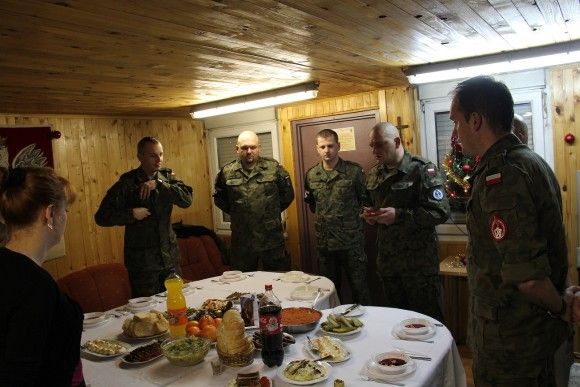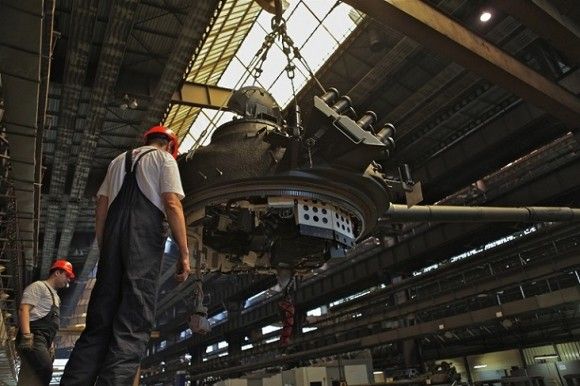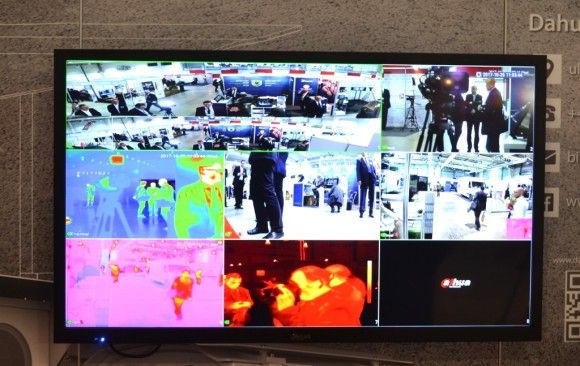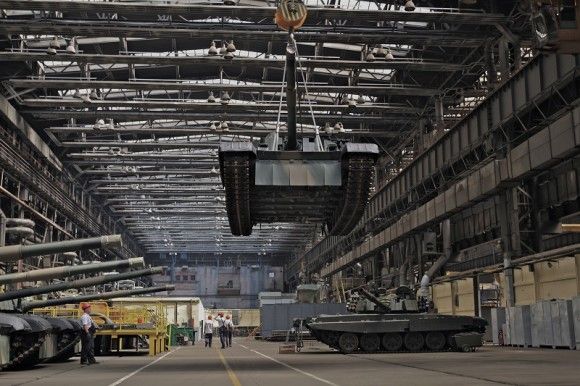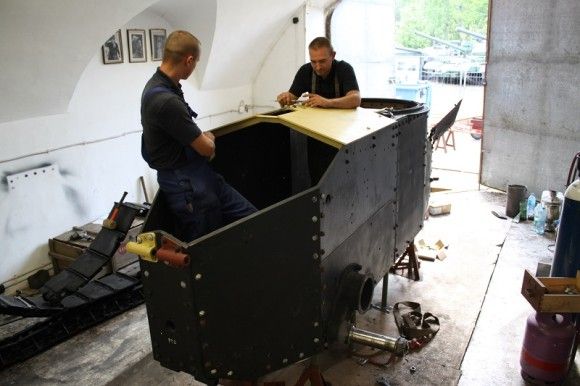Armed Forces
“Artillery Deal of the Century” – Concluded. “Regina” Procurement – PLN 4.6 Billion
Agreement has been signed, obliging the Huta Stalowa Wola facility to deliver equipment for another four squadron-sized “Regina” artillery elements. The conclusion of the contract took place in presence of the Polish PM, Beata Szydło, Polish Minister of Defence, Antoni Macierewicz, and the management of the Polish Armaments Group. For the first time, the value of the contract, the “early conclusion” of which was announced on 18th November by the Minister of Defence, has been disclosed: PLN 4 649 million. The aforesaid amount also includes the commission fee for the Polish Armaments Group.
The ceremony related to conclusion of the most significant contract in history of the Polish defence industry, that would cover the procurement of the armament for the Polish Army, took place almost exactly two years after a cooperation agreement was concluded by the HSW company in South Korea, concerning the joint effort covering the acquisition, by HSW S.A., of rights to manufacture, polonize, develop and export a new chassis for the 155 mm “Krab” self propelled howitzer. The said cannon is the basic weapon embedded within the “Regina” elements.
The contract signed on 14th December, on the other hand, covering, among other subjects, procurement of another 96 “Krab” howitzers, makes it possible for HSW to initiate the procedure of taking over the design documentation of the chassis from the Korean Hanwha Techwin company, and to design and create the equipment required for mass production. Furthermore, HSW may also start to conclude agreements with collaborators who are going to be involved in the said manufacturing process. Finally, training for the employees may be organized too, among the further steps required to initiate the production.
This process, according to the assumptions, should definitively end at the moment when works would begin on a chassis which would be a completely Polish product (the engines, automatic transmission units, and elements and components which would be not affordable to be manufactured in Poland, will be imported). It is expected that works on acquiring the documentation would begin “without any delay” – most probably – in January. Not only is the value of this cooperation, and its significance for the Koreans, visible in the presence of the Hanwha Techwin high representatives during the ceremony, as staff from the South Korean Embassy also attended the event.
HSW S.A., in collaboration with the Polish Ministry of Defence, began to work on components and elements of the cannons for more units, even before subsequent agreement has been signed. Thanks to the steps above, by mid-December 2016, the works pertaining to the turret systems for the 12 “Krab” howitzers for the second Squadron Fire Module, have been completed to a degree of around 50%. The works related to another 12 turret systems are scheduled to begin next year, in parallel with the effort related to the series manufactured “Rak” mortars, and implementation of the license-manufactured “Krab” chassis, and achievement of the target process-production abilities of the expanded and modernized barrel manufacturing facility. Neither HSW, nor Brig. General Sławomir Owczarek, Chief of the Polish Missile and Artillery Units, negate the speculations that the second “Regina” squadron-sized element is to be procured, in its complete shape, in 2018.
So far, the only components of the “Krab” howitzer that are not manufactured in Poland are the barrels. This is because the Polish Defence industry, up until recently, was not in possession of capability of processing and machining barrels that are so long, of so large calibres. The Company based in Stalowa Wola decided to get rid of the said gap, by beginning a process of modernizing and expanding the barrel manufacturing facility. Thanks to the above, such capabilities would be acquired, not reconstructed, recovered by the Polish industry, which is often erroneously stated. Never before have barrels conforming with such specification been manufactured in Poland, even though HSW did manufacture such components for the 122 mm 2S1 SPH, as well as barrels which were more than 5.6 meters long (D-10T tank cannon for the T-54/55 tanks). However, the barrels for the 2A46M cannons (125 mm, length of 6.35 meters) for the T-72 tanks, have been imported by the Bumar Łabędy company from Czechoslovakia.
Before the modernization of the HSW barrel manufacturing facility, the plant was capable of manufacturing the 3-meters long barrels for the Rak 120 mm mortar. HSW has made declarations that the howitzers of the second “Regina” squadron would feature the barrels, the machining of which would take place, in its entirety, at the Stalowa-Wola based facility. Up until now, these have been imported from Germany, in a form after the initial mechanical processing. Currently, it is assumed that solely the semi-fabricated products required to manufacture the said components would be imported, and some of the production of the 155/52 barrels may be carried out in Poland too. This challenge is being faced, above all, by the HSW S.A. facility and by the Huta Stal Jakościowych (Quality Steel Works), also based in Stalowa Wola. At the beginning of January, at the new barrel manufacturing plant, complete mechanical machining of a completely Polish (excluding the pre-fabricated half-product) barrel for the 155 mm howitzer.
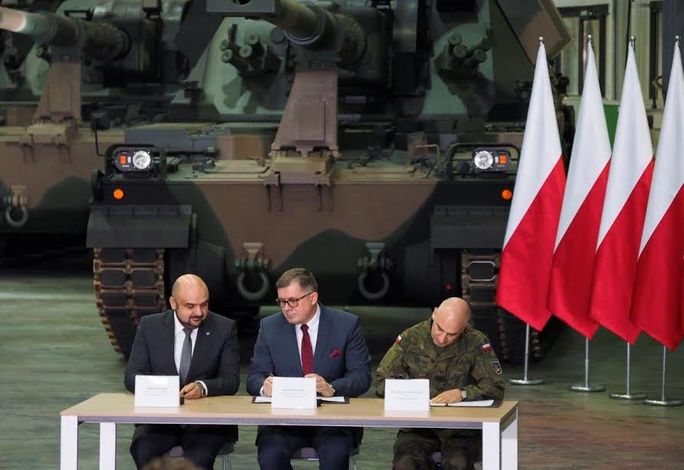
It is also worth to remember that as the series production capabilities are being established and unfold at HSW, when it comes to the 155 mm tracked-chassis SPHs, HSW also started the series production process of the “Rak” 120 mm self propelled automatic mortars. The first two (out of eight) support companies are expected to receive their equipment in 2017. Brig. general Sławomir Owczarek considers the above to be a significant reinforcement of the combat capabilities remaining at hand of the mechanized units.
In mid-December 4 “Rak” mortars were ready for delivery, while another two went through the artillery test programme. Intensive works have been carried out with a reference to the subsequent vehicles, moreover, works have been also performed, when it comes to the Artillery Command Vehicles based on the same platform (Rosomak APC).
According to the Agreement signed on 14th December, the whole contract concerning the four “Regina” elements should be finalized by 2024. Neither the military, nor the manufacturer, have disclosed the detailed procurement schedule. As we know, the 11th Masurian Artillery Regiment stationed in Węgorzewo and subordinated to the 16th Mechanized Division, is going to become the first user of the “Regina” equipment. Subsequent modules, which has been confirmed by brig. Gen. Adam Duda, Head of the Polish Armament Inspectorate, would be received by the artillery regiments which at the moment utilize the “Gvozdika” howitzers. This means that 5th (12th Division) and 23rd (11th Division) regiments, as well as the Armoured Brigades, are to become the next elements that should get ready to replace their armament.
[[OBRAZ-44007]]
After the conclusion of the December contract, Huta Stalowa Wola has confirmed the role it plays in the Polish Armaments Group. The company has been able to conclude governmental agreements of strategic value, concerning two, strategically important “Rak” and “Krab” artillery systems, only during the year 2016. The total value of the production contracts exceeds PLN 5.6 billion. At the same time, Jelcz (100% of the shares belonging to HSW) and Autosan (50% of shares owned by HSW) companies are either already working on implementation of important contracts for the Polish Ministry of Defence, or are bound implement such projects in the nearest future. AUTOSAN company has also signed a letter of intent with Raytheon, concerning the production of components for the Patriot air defence system. If the selection to be made within the Wisła tender would point to the said company, then the Sanok-based factory may also become a servicing centre for the container-based systems operated within the framework of the Patriot SAM.
More challenges are placed in front of the HSW facility itself. The first one is related to finalization of the research and implementation of series production of the remote-control ZSSW-30 unmanned turret module for the Rosomak APC. The second one is connected to finalization of works and research and initiation of the production process, related to the new “Borsuk” amphibious IFV. Moreover, it is expected that test programme concerning the wheeled “Kryl” SPH would be completed, with series production of the weapon to follow, and, if only political decisions are made concerning the selection of the strategic partner, when it comes to the rocket component of the system, it may turn out that that the WR-300 “Homar” rocket launchers would also enter the series production phase. Brig. general Adam Duda, when asked about the prospects of the latter programme, made a mysterious statement, saying that “in a year we will have a chance to attend a meeting similar to the one which took place today”. The above would be supported by the fact that the Stalowa-Wola based company, in case of the “Krab” and “Rak” programmes, went from the negotiation and preparatory phases to the production stage, and it may be able to allocate more resources to finalize the work related to the details of the “Homar” programme.
HSW is also waiting to be involved in the “Wisła” missile defence programme, and in the less spectacular, but equally important programmes related to the 35 mm cannons for the Navy, “Noteć” air defence systems and “Loara” programme which could potentially be resuscitated. On the other hand, the agreement signed with Samsung Techwin (now known as Hanwha Techwin), on 17th December 2014, has ended several years of stagnation related to the Army’s reservations related to the quality of the 8 howitzers delivered at the end of November 2012, specifically concerning the quality of chassis that was designed and delivered by the Gliwice-based Bumar Łabędy company.
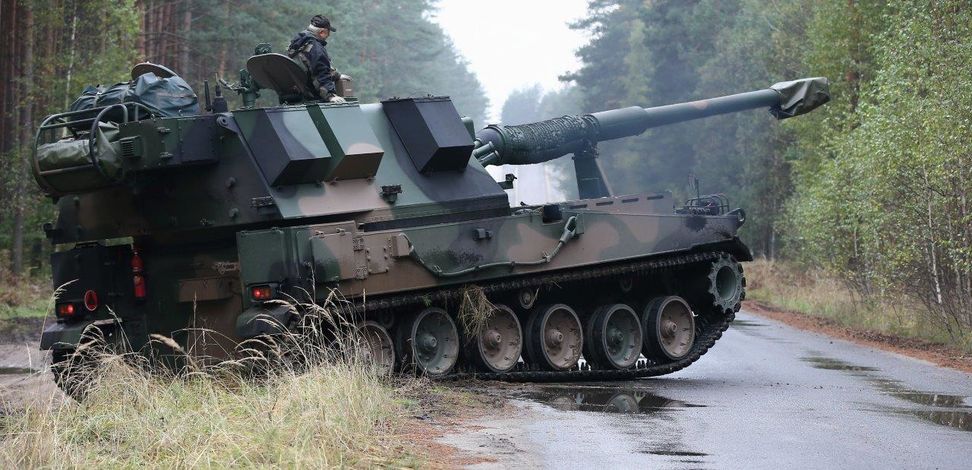
Micro-fractures within the structure of the chassis bodies were not the only ground for remarks. During the military-operational test programme which has been conducted from the late 2012, more defects of the chassis were discovered, including oil leaks from the engine inside the engine chamber, exhaust gases penetrating the crew compartment, defective and long filling procedure related to refuelling, deviated indications provided by the engine instrumentation, and so on.
The Army suspended the acceptance of the subsequent examples of the “Krab” howitzer, also accepting the fact that HSW S.A. would continue the work related to the turrets that were to be installed on the SPHs of the first complete Squadron Sized Fire Module. This was to get the Army some time to resolve the tensions and problems related to the defective chassis. The Army came to a conclusion that even though the chassis was defective, Krabs could be used for training purposes, related to implementation of the new weapons system, development of tactics, artillery training, and so on. Also in case of the chassis no. 9, which was to meet the requirements, defects existed. In the light of the fact that the Contractor responsible for the Chassis did not sign the annex to the agreement concluded by and between the Polish Ministry of Defence and the HSW S.A. company, acting as the contractor within the “Regina” programme, the company from Stalowa Wola felt obliged to find a new solution.
During the 2013 edition of the MSPO Defence Exhibition, a letter of intent has been signed concerning the collaboration between HSW SA and the Turkish Makina ve Kimya Endüstrisi Kurumu (The Mechanical and Chemical Industry Corporation) company, the manufacturer of the T155 “Firtina” SPH. It is a license built derivative of the Korean K9 “Thunder” self-propelled howitzer. The Army was not inclined to accept further delay, when it came to finding a solution to the problems that were related to the domestically designed “Kalina” chassis, and it did not meet the expectations of the Gliwice-based production centre, awaiting the acceptance for the new postponed deadlines, concerning the work mentioned above. HSW has shown even more determination, as the Polish Ministry of Defence threatened to implement contractual penalties for breaching of the contract pertaining to delivery of the equipment for the first “Regina” unit until 2015.
Both the Polish Ministry of Defence, as well as HSW, ultimately came to a conclusion that no bright future may be foreseen for the “Kalina” chassis. Alongside the aforesaid disadvantages, one should remember that the “Kalina” chassis, having its design roots in the SPG-1M tractor, had virtually no guaranteed engine access. This design was based on the W-46-6 engine, with a power output of only 780 HP. The said engine, manufactured since the 1980s on the basis of a Soviet license, was then modified and upgraded to the S12U version, with power output increased up to 850 HP. In theory, the said power-pack could still be developed, however no determination was shown within that scope, and development of the said engines ended at the S1000R stage - 1000 HP power output has been attained. The engines were installed in the PT-91M tanks manufactured for Malaysia. Further works have been abandoned.
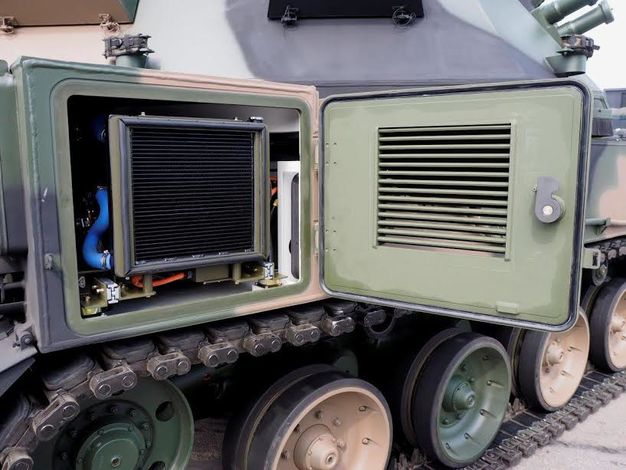
After the tank-class engines production process has come to an end at ZM PZL Wola, and after the plans of establishing an “Engine Manufacturing Centre” in Silesia were cancelled, two options remained available, when it came to acquisition of the S12U family engines. First was related to general overhauls of the engines recovered from the equipment that was disposed of, which utilized the said engine (mainly the T-72 tanks). After recovery, the engines would undergo an in-depth modification. The second option was based on an assumption that the engines would be imported from one of the Balkan states which, in the past, was a part of the former Yugoslavia. In the light of the defective chassis design delivered by the Gliwice-based facility, collaboration between HSW and Bumar Łabędy in the “Regina” programme was cancelled.
The solution which was being developed in Stalowa Wola, even despite the letter of intent signed in September 2013, took on a form of concluding the aforesaid agreement with the Korean partner, licensor of the Turkish “Firtina” vehicle. The Korean entity turned out to be much more flexible than the Turkish company, which, without any doubt, stems from the fact that less business collision points emerged between the Koreans and the HSW company, especially in comparison of potential emergence of such problems in case of acceptance of the Turkish offer. The potential sales markets of both companies did not interfere. Thus, not only was it relatively easy for the Poles to obtain guaranteed access to full design documentation of the chassis, as HSW also was allowed to make modifications to the platform, which could be referred to as the “first phase of polonization”.
The Korean Party provided HSW with a guarantee that the Polish company would retain a full right to develop the chassis design for other applications, and for exporting the assembled military vehicles that utilize the said carrier. The Koreans also confirmed, which was quite important for the Polish Ministry of Defence, that readymade chassis examples for 24 “Krab” howitzers would be delivered. The said SPHs were to constitute the armament of the first “Regina” unit, which was to become a part of the 11th Artillery Regiment based in Węgorzewo.
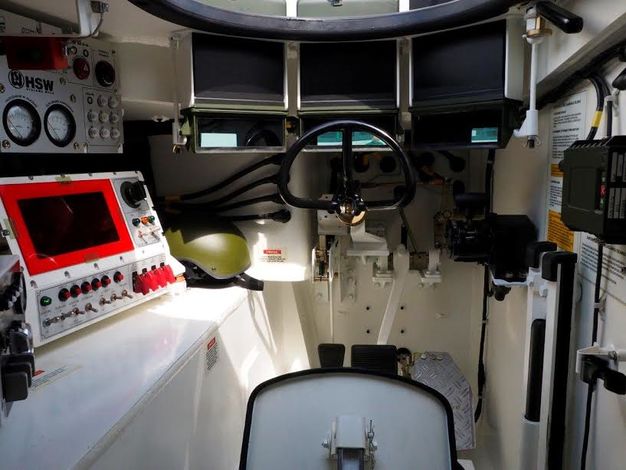
Within the framework of the first stage of polonization of the design, several changes, important for the Polish buyer, were made. The chassis has been equipped with an APU, not present in the original design, air-filtering/ventilation system, a modern fire-extinguishing system, and an anti-explosion system. The instrumentation was replaced with the Polish products, moreover, arrangement of the interior was changed, and new Polish intercom was introduced. And this is just the tip of the iceberg. All of the aforesaid changes were being implemented by a design team comprising of representatives of both companies. The achieved tempo of changes was so high, that the first chassis configured in line with the new documentation has been completed and delivered to Stalowa Wola, including 7 weeks long shipping, in mid-August 2015. Within a few days it was integrated with a complete turret system, and in September the Krab 2.0 prototype was presented during the MSPO exhibition in Kielce. Several days later, the second example of this variant of the “Krab” SPH was assembled. During the subsequent months, a research programme concerning the type certification, related to replacement of the chassis in case of the remaining examples of the “Krab” howitzer. The tests confirmed that the howitzer has attained the assumed parameters, after being placed on a new platform.
The official handing off of two examples of the new version of the howitzer took place at the HSW S.A.. facility on 28th April 2016, in presence of PM Beata Szydło, who assisted in the process of signing the contract worth almost 1 billion zlotys, covering the process of equipping 8 company-sized units with the “Rak” self-propelled automatic mortars, including, in total 64 vehicles.
The new “Krab” howitzers, at the very beginning of the operational-military tests which took place at the Artillery and Armament Training Centre in Thorn, have shown that they are advantageous, when compared to the former variant based on the “Kalina” chassis. The soldiers who had a chance to operate both variants of the “Krab” howitzer stress mainly the advantages of the hydro-pneumatic suspension of the new platform, which, in a manner quicker and more effective, diminishes the effect of recoil after the shot is taken, which makes it possible to achieve higher rate of fire and accuracy. Better offroad capabilities are just an another added value.
The new K-9 chassis features a modern MTU-881 engine powerpack (Ka-500 family), with its power output of 1000 HP. It is also significantly lighter than the previous platform. Thanks to the above, the new “Krab” SPH, with its combat weight of 48 tonnes, having 150 HP more and a better drivetrain at its disposal, has much better traction and offroad characteristics. “Krab” has autonomous all terrain range of 400 kilometres. It is able to reach speeds of up to 60 kph on the road and 30 kph in offroad conditions. The platform is able to climb slopes of 25 degrees and go over ditches 2.5 meters wide, vertical surfaces 0.75 m high, it may also wade in water which is up to 1 m deep. Replacement of the chassis did not rid the howitzer of its firepower, and the ammunition quantity required by the Polish Ministry of Defence, which had been reduced anyway, from 60 to 40 rounds and 48 propelling charges.
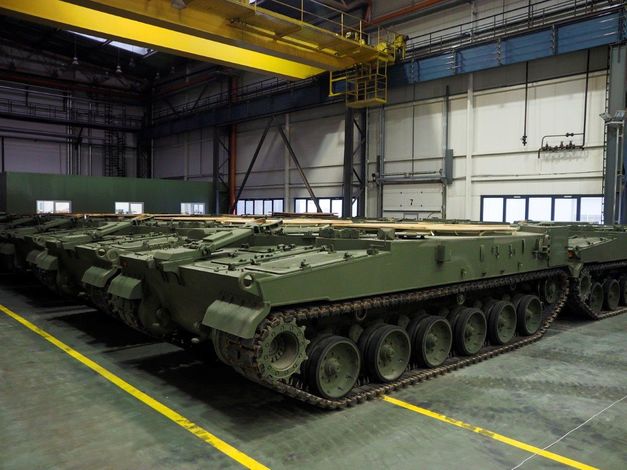
During his November visit to the HSW facility, Antoni Macierewicz confirmed the acceptance of another 9 “Krab” howitzers for the first Squadron Fire Module. The said howitzers have already gone through the acceptance/handing-off test procedure. From that moment, another vehicle went through the aforesaid tests, thus, until the day when the contract was signed, i.e. 14th December, the number of howitzers ready for delivery has gone up to 10, excluding the two examples already procured during the spring season. The manufacturer is ready to deliver those vehicles to the Administrator by the end of this year. Thus, the facility would already have more than half of the works related to the contract completed, as command vehicles, ammunition vehicles and engineering platforms have already been delivered to the Army.
According to the agreement, the annex to which has been created in collaboration with the Polish Ministry of Defence, Huta Stalowa Wola S.A. is to deliver the equipment for the first Squadron Fire Module no later than by the end of August. Among the cannons that are to be transferred until then, 8 “Krab” vehicles that were originally delivered back in 2012 are also to be delivered again, with their chassis replaced and turret overhaul works performed. According to the declarations made by HSW, the said vehicles would be delivered “as new”, not differing from the brand new platforms. The howitzers in question would also be a subject to the 2 years guarantee. We do not know though, whether the old chassis would be returned to its original manufacturer by HSW. Future plans made by Bumar Łabędy, regarding the aforesaid platforms, remain unknown. The issue is a subject to legal procedures. Not only will the settlement of this convoluted circumstance require good intentions from both Parties, as adaptability and conciliation ability would also be useful on the part of the Polish Armaments Group, to which both of the conflicted companies belong.
Jerzy Reszczyński

